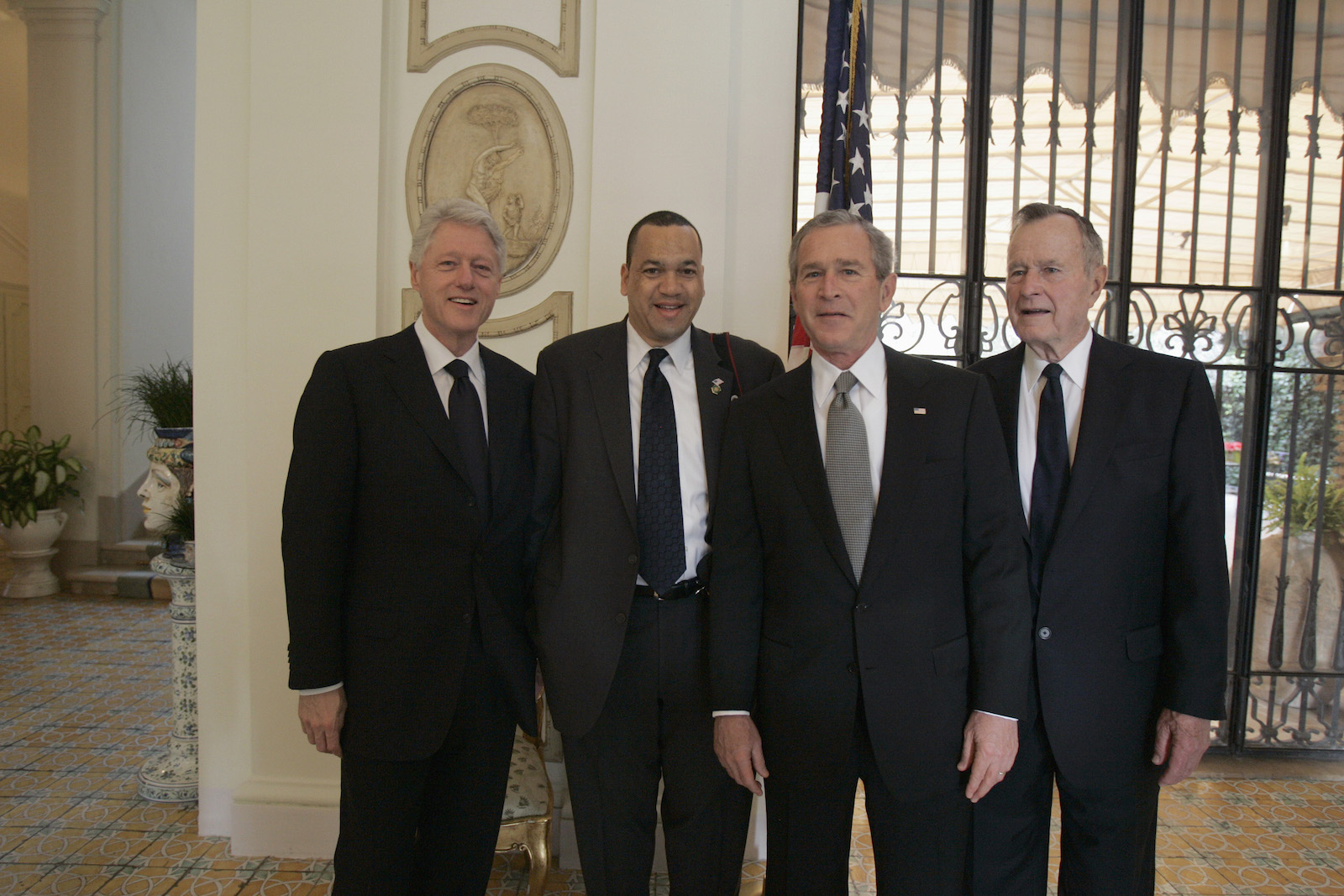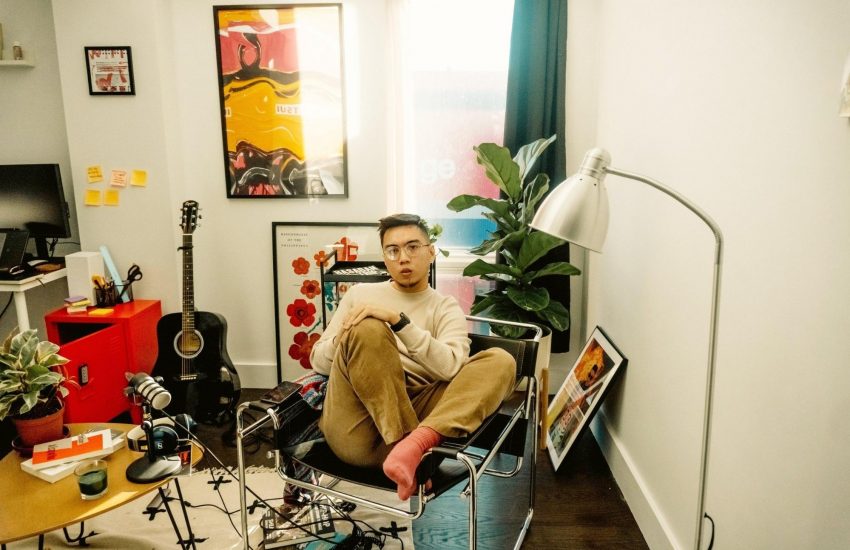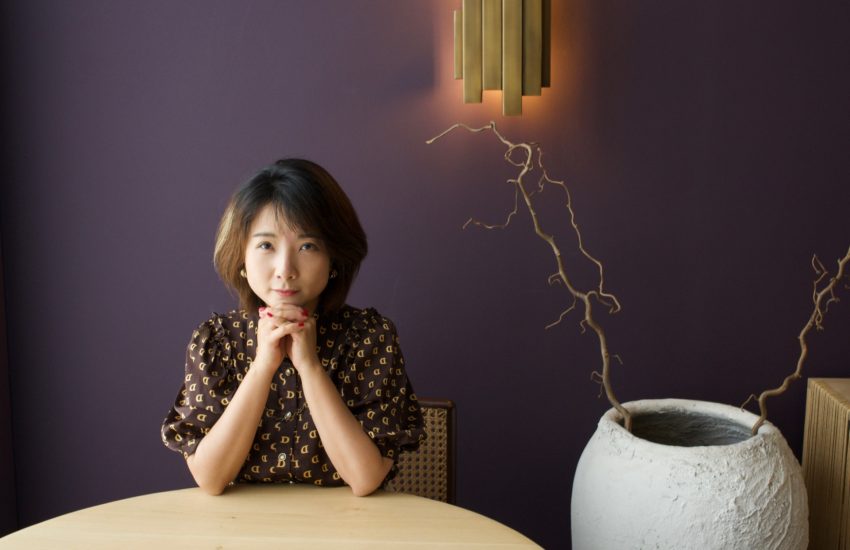Eric Draper on being the President’s visual storyteller
Among the U.S. president’s inner circle of strategists, advisors and politicos is another key member of the team. That’s the official White House photographer. Eric Draper had that role as visual storyteller-in-chief for President George W. Bush’s two terms in office. Throughout the eight years of the Bush presidency, Draper was almost always there, shooting everything from family time and public ceremonies to the president’s response to national emergencies.
Storybench spoke with Draper about creating a visual archive of the presidency and his experience with the White House photo office’s transition from film to digital.
How did you end up as President Bush’s photographer?
I started out as a news photographer for The Associated Press and got assigned to cover the Republican side in the 1996 election. In the primary, I covered Buchannan and then ended up on Dole when he was the nominee. The election cycle put me on the political radar and when the next election in 2000 rolled through I was assigned as the lead photographer on the Bush campaign. After the election was finally called, I was intrigued by the idea of being the White House photographer. I pursued the job after the campaign was over and was able to secure the job to be the White House photographer and head of the White House Photo Office.
What else can you tell us about the role and its importance?
The number one task is creating a visual archive of the administration. This means capturing everything from scheduled events and non-scheduled events to the intimate moments of the presidency. At the end of it all, you need to hand over a living archive for the public and historians to access in the Presidential Libraries.
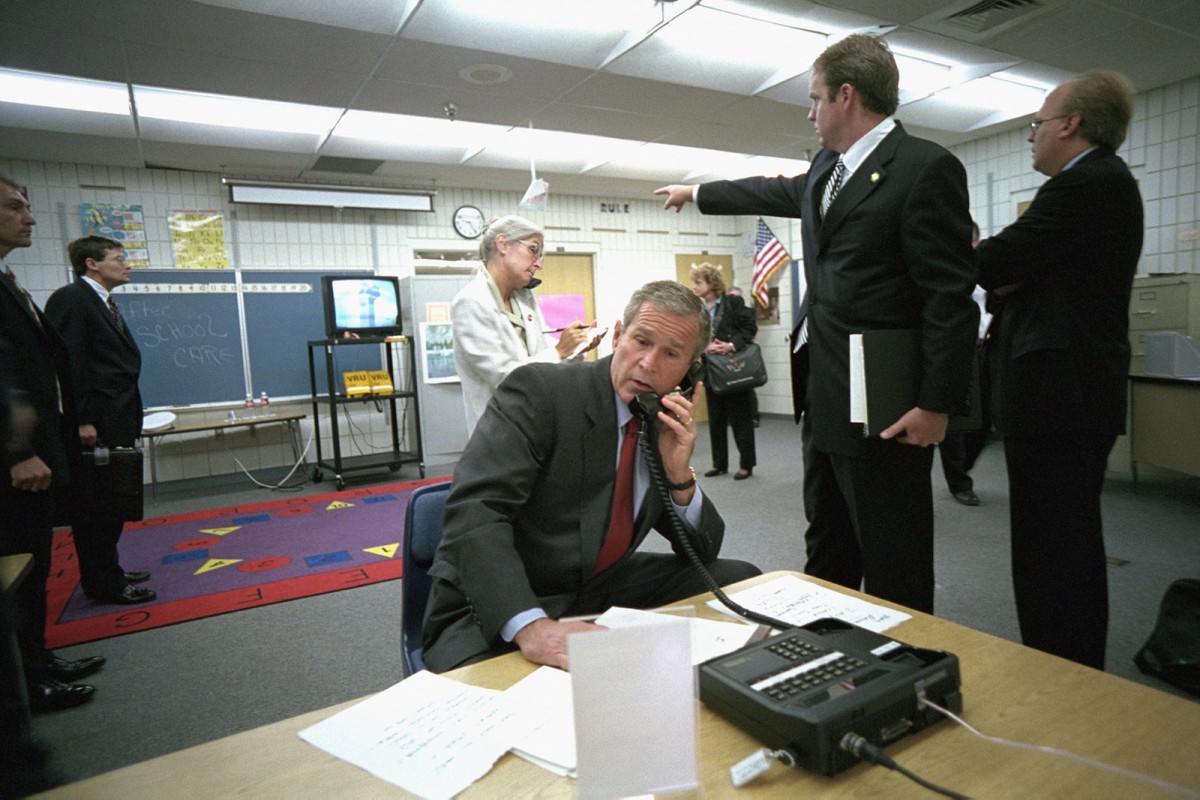
You had the opportunity to cover the president during the terrorist attacks of September 11th. What was that like and how did you react?
9/11 was a day like no other and when everything happened it took a lot out of everyone. At the moment I didn’t want to think about any other perspective at the time. I was so involved in what was going on in front of me, trying to tell a story but never really being able to realize how this would fit into history. I don’t see that day as one day but rather an entire week. Capturing that story was difficult and really affects you. I had to focus on being in the right place at the right time and push back the emotions that I was feeling to truly capture the story. Everyone did their job that day and I knew my job was to have a crystal clear focus to document what was in front of me, for others to place it into history.
How is what you capture as the official photographer different from what the press captures?
The biggest difference is that you are serving the president as the White House photographer. This has a huge consideration in how you approach the job, but I was lucky that President Bush let me pretty much do whatever I wanted to complete the job. He really understood the importance of the White House photographer and the need for me to be there at every moment. There would be times I followed him around for days, but we never spoke, instead I just reacted to what was in front of me. It’s a unique role because I was never a participant in his schedule. I was a trained observer and storyteller.
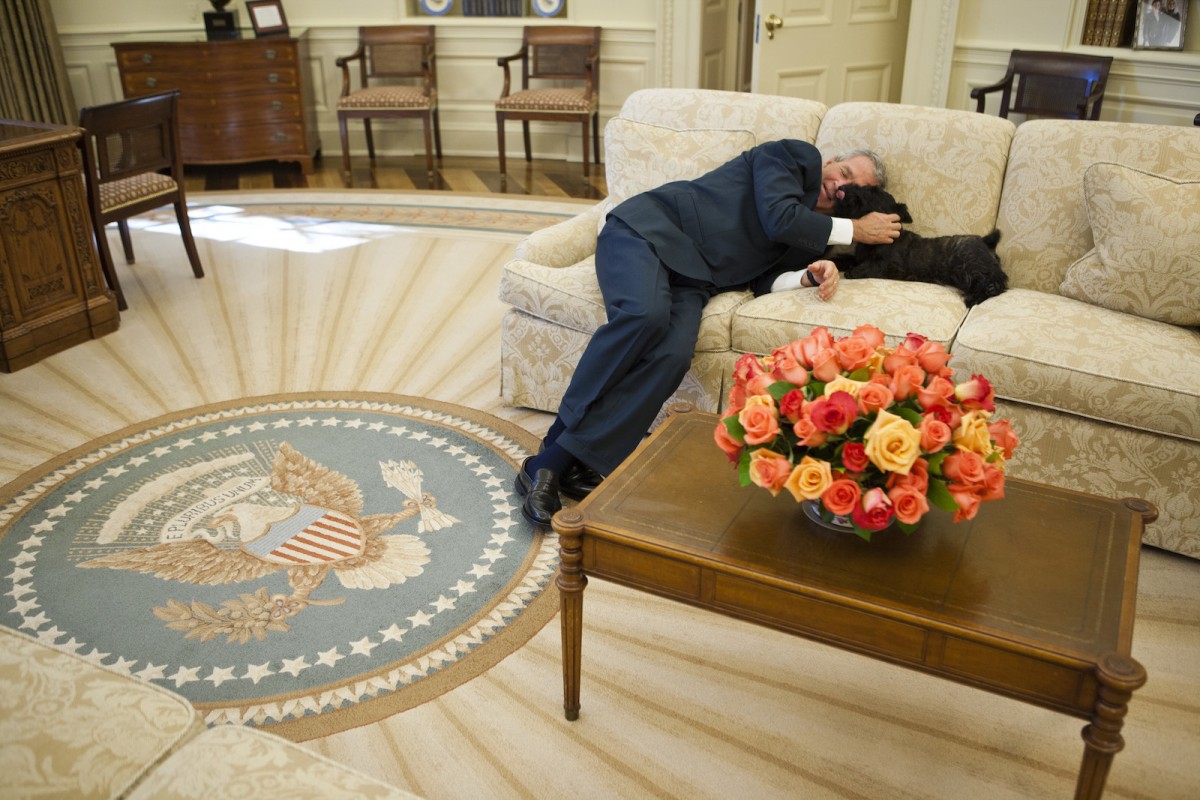
Being from the press side, I knew there was always an angle I was trying to push. You could approach it that way, but I just wanted to get everything on film: the good, the bad and the ugly. I didn’t need to have a point of view; I was trying to make photos that were visually engaging enough to tell the story.
I felt like I was running a marathon, rather than running a race everyday. That’s what separates the media and the official photographer. My role was not to interfere with the media, we worked side by side, but in those situations you yield to the media because they have a job to do as well.
Can you tell us the story behind one of the most intense moments you captured?
One pretty intense moment was after the President decided to commit troops to Iraq. There’s a picture of the President walking on the South Lawn just minutes after making the decision to send troops to Iraq, basically the day the war began in Iraq. It was very personal to me because I was involved in a very short, brief conversation with him. [Ed note: below, an excerpt recounting this conversation from Eric Draper’s book Front Row Seat.]
“I backed off to give him some space as he walked upstairs, through the Oval Office, and out to the South Lawn. I trailed him and watched him circle the lawn. As he approached, I raised my camera and shot.
He asked me if I was interested in history, and I said yes.
“The pictures you are taking right now, the one in the Situation Room and here on the South Lawn, are very important,” he said.
Vice President Dick Cheney and Secretary of Defense Donald Rumsfeld came walking down the path. The three men joined in conference and I shot. Later that night, watching the president’s address to the nation, I would learn that we were going to war.
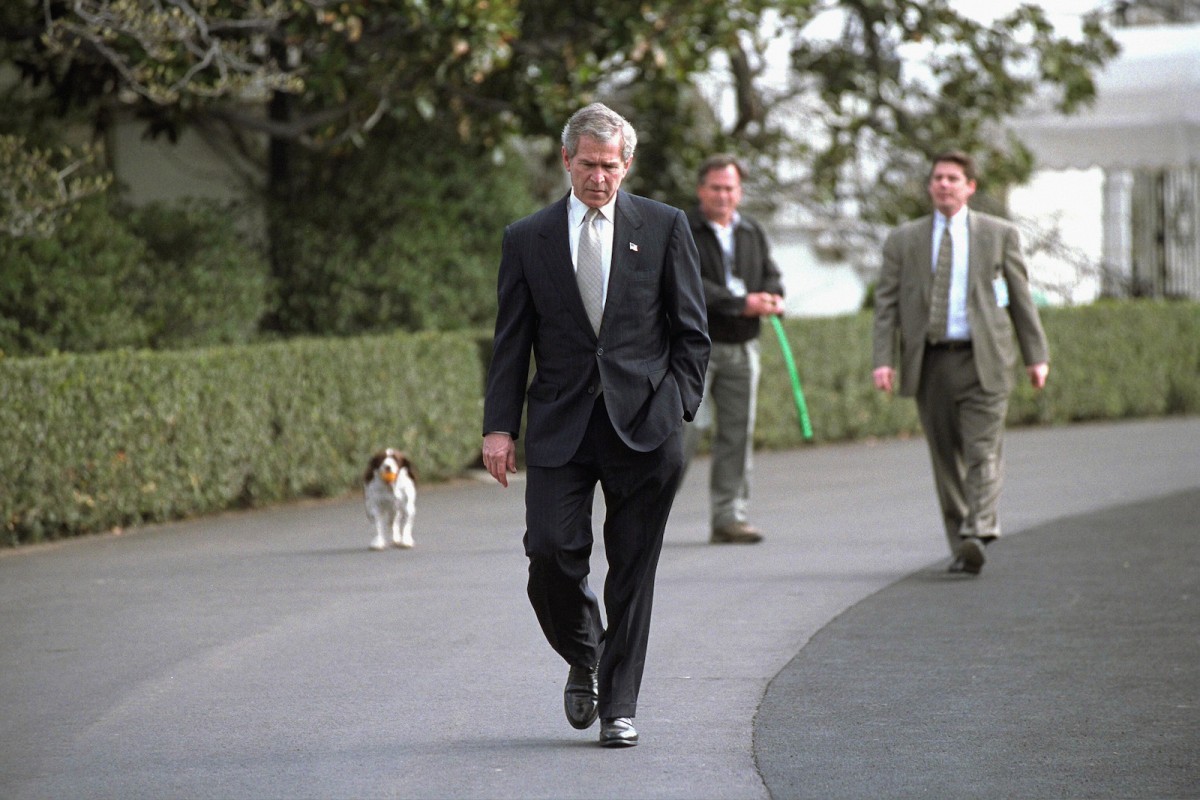
What innovations are you seeing in the role of the White House photographer?
Every administration’s era has emerging technology that determined how the role of the visual story would evolve. For example, we had to deal with the emergence of the White House website and the transition from film to digital. You have to take what you have coming in and raise the bar every year. Obama’s administration has really done an excellent job of that in terms of social media. The next administration will only build on that and other new technologies.
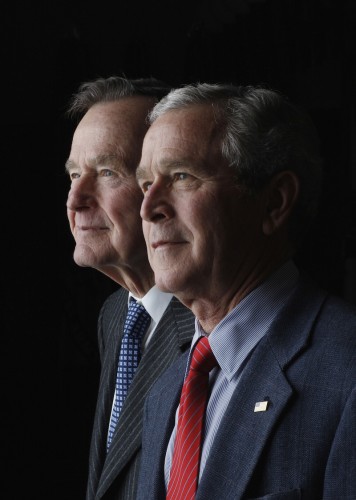
What kind of response do you see from the media to the sheer volume of digital photos produced by the White House?
The media’s view of the White House is hard because the advancement of digital technology has made the access to photos in the White House easier. Now that you have instant and plentiful access it makes it harder for the media to capture unique moments. We didn’t put pictures out that would trump anything that the media would have. We are lucky because our access gives us so many photos to choose from across a wide variety of moments. The media equates the number of photos being released to less access. In some cases that is true, in others its not, but it is a sign of the times and advancement of technology. It’s a balancing act in maintaining access and keeping the message and documentation of the White House on the forefront.
How was the transition from film to digital?
The White House was behind the times when I walked in the door [in 2000] and we were all film. It took the entire first term to design and put in place a digital system, mainly because of the need for storage. By the time we made it into the second term, we had transitioned to digital. Leading up to that it was a nightmare to handle both mediums at the same time.
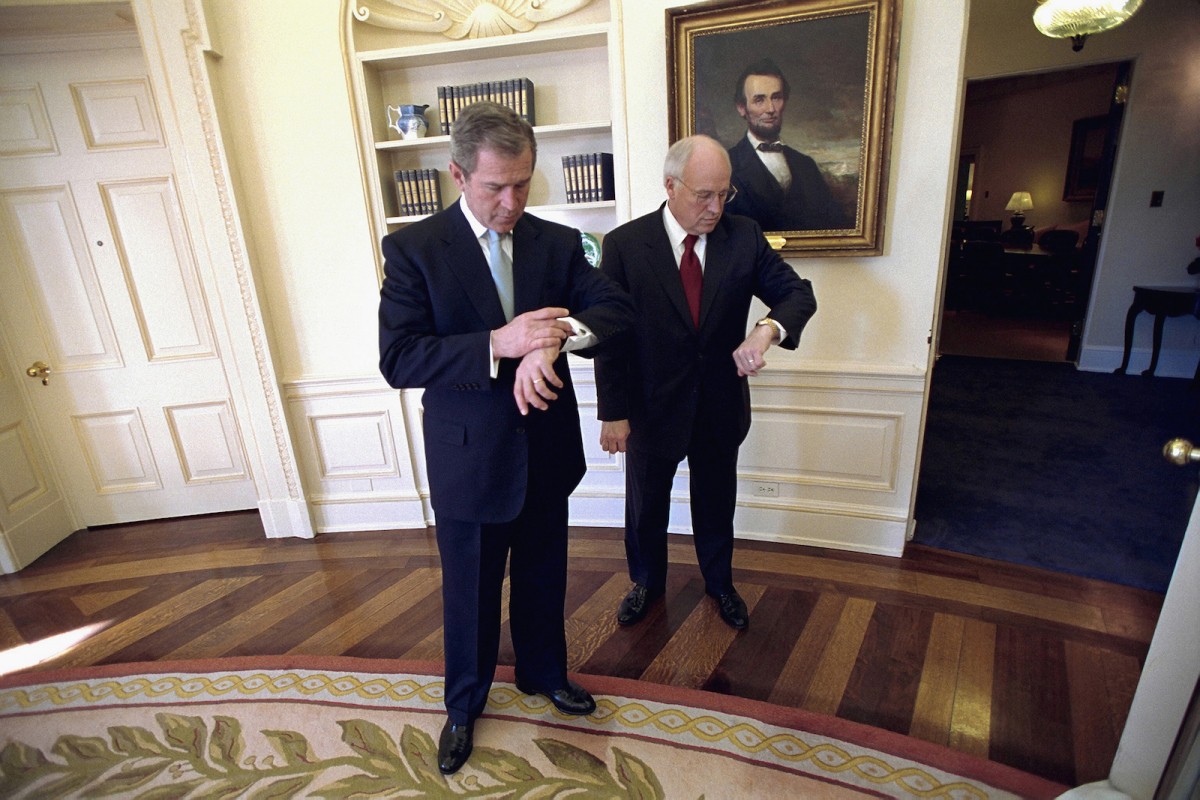
What equipment do you use?
In the days of film I used Leica film cameras, which I think are still the best tool for capturing images. They are the quietest cameras in the entire world and they handle low light situations very well. But you have to work a little slower. The switch to digital brought cameras that were big, bulky, and noisy. The noise was a problem, because if you are in quiet and intense moments in the Oval Office and you take a photo, it could sound like a cannon was going off. That really kills the moment and meant we had to be strategic in the decision to shoot sometimes. As technology evolved in digital, it got a lot better and the advantage of having more photos and the ability to quickly edit changed the game. Now I use a Canon 5D Mark III and it’s light-years ahead of what we used before.
How do you deal with today’s pressure to publish photos almost instantaneously?
For me there’s always an issue of quantity versus quality. The instant gratification of being able to post live, on the scene, from the spot is always interesting but there’s a balance between that and the quality of the picture. Sometimes it’s better to wait until you have more context when everything’s over. If you want to emphasize what the story is about, you want the ability to edit, especially if you want to make an impact. That could mean waiting an hour or a day.
What do you think about the future of political photojournalism?
The world will continue to be visual and the access to digital images will continue to increase. Digital may be great for photographers, but it can become overwhelming [to viewers] because some images won’t be as memorable because there are so many. There’s such a flood of imagery coming out of social media, it makes it hard for more powerful images to rise to the top. It might take a bigger moment in history, like 9/11 or the scene in the Situation Room when bin Laden was killed, for those images to rise to the top.
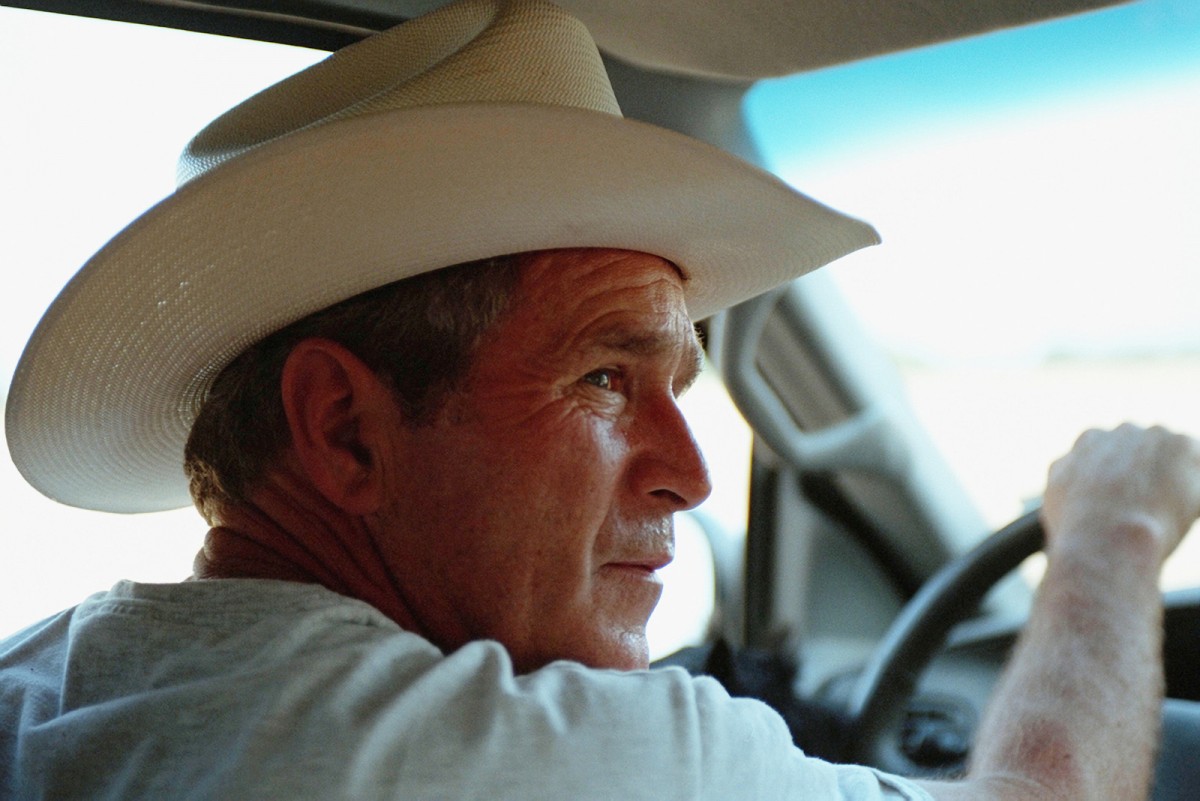
- Eric Draper on being the President’s visual storyteller - May 11, 2015
